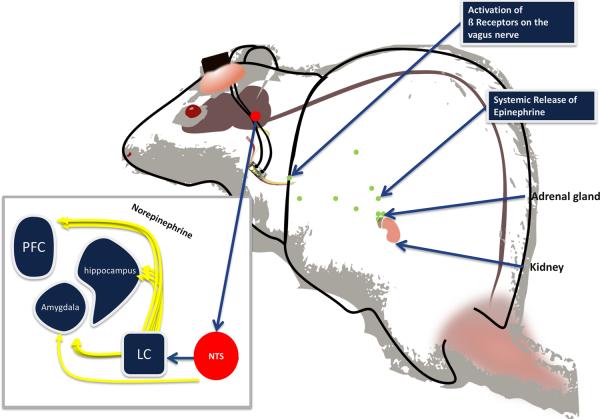Figure 4.
Model of emotional arousal effects on peripheral and central nervous systems in the rat. Under stressful conditions, epinephrine (green dots) is released into the bloodstream by the adrenal medulla. It does not cross the blood-brain barrier but binds to β-adrenoceptors located on the vagus nerve (pictured here with stimulating electrode cuff connected to a head implant). Stimulation of the vagus nerve promotes release of norepinephrine in the cortex, hippocampus, and amygdala either by direct projections to the nucleus of the solitary tract (NTS) or indirect connections with the locus coerulueus (LC). Artificial stimulation of the vagus nerve is administered through a connector that is surgically attached to the skull.

